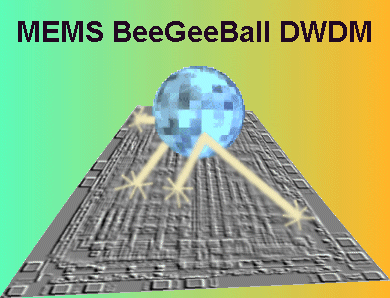(C) 2005 Hank Wallace

In a parallel breakthrough, the team linked the rotational speed of the sphere to the periodic content of the optical signals, creating a dense wavelength division multiplexer (DWDM) that adapts to changing signal conditions and moods. This is thought to enhance the transfer of information and other substances between users of the new chip even after shutting the device down for the night.
The DISCO team lamented the low intellectual bandwidth of their chip. However, they noted that its capacity to transmit mind numbingly repetitive signals with high crest factors is exceptional. Due to a likewise low information content, transmission of rap music is accomplished with less than 0.1dB loss.
Further hurdles to overcome include a remarkable and damaging resonance when exposed to cheesy and embarrassing male falsettos in the data stream. These effects have been partially mitigated with the liberal application of gin and tonic and some cheap canned beers. Spectral analysis of these substances is proceeding to determine the active agent.
The chip will be available in a series of pastels and prints, comes with a CD of period music, and is expected to be popular with fortysomething balding engineers.
Author Biography
Hank Wallace is the owner of Atlantic Quality Design, Inc., a consulting firm located in Fincastle, Virginia. He has experience in many areas of embedded software and hardware development, and system design. See www.aqdi.com for more information.
